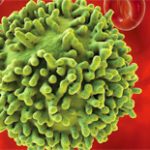From their research, the team concluded that SATB1cKO mice lack critical pTreg cells during the first week of life, as well as defective negative selection, both of which contribute to their development of SS.
Lara C. Pullen, PhD, is a medical writer based in the Chicago area.
ad goes here:advert-1
ADVERTISEMENT
SCROLL TO CONTINUE
References
- Kondo M, Tanaka Y, Kuwabara T, et al. SATB1 plays a critical role in establishment of immune tolerance. J Immunol. 2016 Jan 15; 196(2):563–572.
- Tanaka Y, Sotome T, Inoue A, et al. SATB1 conditional knockout results in Sjögren’s syndrome in mice. J Immunol. 2017 Dec 15;199(12):4016–4022. doi: 10.4049/jimmunol.1700550. Epub 2017 Nov 10.
